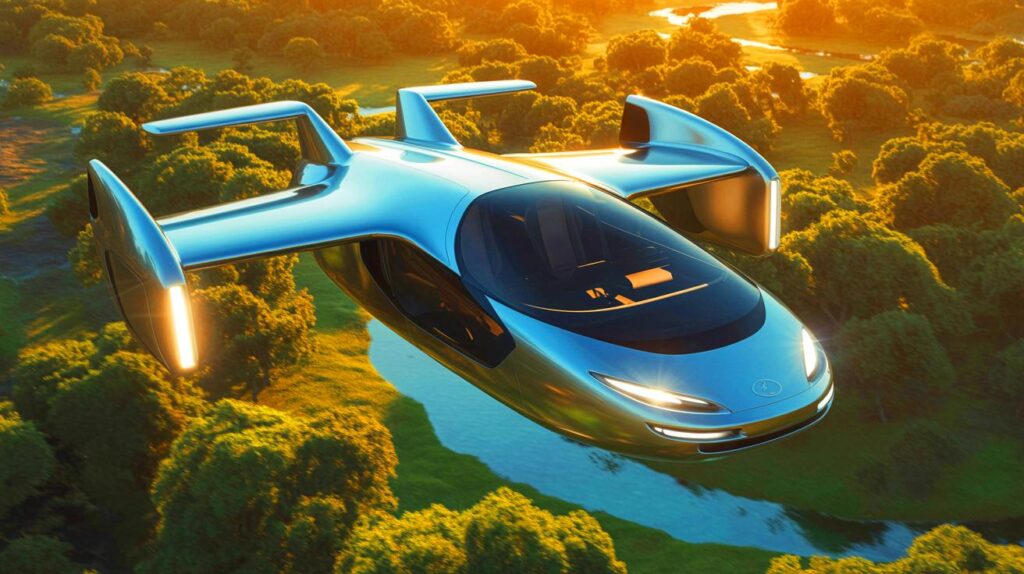| In Brief |
|
Flying cars continue to fuel our collective imagination, often evoking futuristic visions from past world’s fairs. However, for Dezső Molnár, an inventor based in Los Angeles, this dream is becoming a reality with the Streetwing. This vehicle, designed to be both a road car and a flying device, combines joy, economy, and exploration. Molnár, with a career as varied as it is impressive, embodies innovation and a passion for new technologies. As a member of the prestigious Explorers Club, he shares this affiliation with notable figures such as Buzz Aldrin and Jane Goodall, emphasizing his commitment to exploration and innovation.
An Inventor of Many Talents
Dezső Molnár is not an ordinary inventor. His professional journey is as diverse as it is impressive. A pilot in the US Air Force, X-Prize judge, team leader for the Spirit of America land speed record, and much more, his resume is a true catalog of extraordinary accomplishments. His ability to combine varied skills and apply them to his innovative projects sets him apart in the world of engineering and aviation. Furthermore, his involvement in projects such as the Mixman DM-2, a musical invention, showcases his versatility and creativity.
His membership in the Explorers Club further solidifies his stature. This prestigious club is known for including leading explorers and innovators among its members, personalities who have pushed the boundaries of human and scientific exploration. Molnár is part of this tradition of boldness and discovery, and the Streetwing is one of his most ambitious contributions to date.
Design and Engineering of the Streetwing
The Streetwing by Molnár is not just another flying car. It is a versatile machine designed to perform well both on the road and in the air. Inspired by the Quickie 2 Tri-Q200, a personal aircraft of the inventor, the Streetwing incorporates innovative electric propulsion, with a 52 kW motor and an 8 kW hub motor. This combination allows the vehicle to travel efficiently on roads while being ready for flight.
In terms of design, Molnár collaborated with Craig Calfee, a pioneer of the first carbon fiber bike used in the Tour de France, to create a plug-mold model for the Streetwing. This collaboration resulted in a design prioritizing aerodynamic efficiency and lightweight. The Streetwing is thus equipped with two sets of lightweight 2.1-meter wings, ready to be utilized for flight or alternative configurations, such as wind propulsion on desert roads or frozen lakes.
Innovation and Energy Sustainability
In a world increasingly aware of environmental challenges, Molnár’s choice of electric propulsion for the Streetwing is particularly relevant. This decision offers several advantages, including noise reduction and increased accessibility of landing strips. Indeed, the Streetwing is designed to be much quieter than most traditional private aircraft, making more airports accessible.
The Streetwing is also equipped with solar panels that allow it to recharge its batteries independently. A major innovation is the use of the wings as wind turbines to harness wind energy and recharge the batteries when the vehicle is parked. This ability to generate its own electricity, combined with the option to plug into an electrical outlet, could significantly reduce operational costs, potentially bringing them down to around €1 per hour, compared to €100 currently for private aviation.
| Specifications | Details |
|---|---|
| Length | 5.2 meters |
| Motor | 52 kW (electric) |
| Max Speed (road) | 161 km/h |
| Flight Range | 160 km |
Challenges and Prospects of the Streetwing Project


Despite the impressive progress made by Dezső Molnár with the Streetwing, several challenges remain. The project is primarily self-funded, which limits the resources available to finalize development. While the chassis is ready for the road, certification for flight still requires significant investments, especially for a carbon fiber fuselage and other flight equipment.
Molnár is open to sponsorship proposals to help overcome these financial obstacles. His vision is to create a machine capable of transforming personal mobility by combining terrestrial and aerial exploration. With such potential, the Streetwing could revolutionize how we envision personal transport, especially in areas difficult to access by traditional means.
As the Streetwing continues to take shape, one question remains: how will this innovative vehicle transform our perception and use of flying cars in the coming years?










